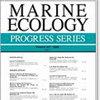Quantification of marine metazooplankton: Do we need to include juveniles?
IF 2.2
3区 环境科学与生态学
Q2 ECOLOGY
引用次数: 0
Abstract
ABSTRACT: In 1966, Working Party 2 of the Scientific Committee on Ocean Research (SCOR) chose the mesh size of 200 µm to collect zooplankton of a width of >200 µm. In the proceeding decades, research has described various zooplankton taxa with widths narrower than 200 µm. For example, we have become more aware of the existence of juvenile stages and small zooplankton species. Yet, utilizing nets with 200 µm mesh has continued to some extent, although it is recognized that juvenile stages and smaller species are not quantitatively collected. We suggest that zooplankton sampling be reconsidered by using meshes or methods which quantitatively collect small species and juvenile stages (nauplii and copepodids). These new methods should take into account the narrowest dimensions of the taxon to be studied, thus allowing quantitative sampling of the forms under investigation. To maintain previous time-series, we suggest to continue sampling with cylinder-cone nets of 200 µm mesh for mesozooplankton and add sampling with 30 l Go/Flo bottles at various depths sieved through 20 µm mesh to retain all nauplii and small copepodid stages.海洋浮游动物的定量:我们需要将幼体包括在内吗?
摘要:1966 年,海洋研究科学委员会(SCOR)第 2 工作组选择了 200 微米的网目尺寸来收集宽度为 200 微米的浮游动物。在随后的几十年中,研究人员描述了各种宽度小于 200 微米的浮游动物类群。例如,我们越来越意识到幼体阶段和小型浮游动物物种的存在。然而,尽管我们认识到没有定量收集到幼体阶段和更小的物种,但在某种程度上,使用 200 微米网眼的渔网仍在继续。我们建议重新考虑浮游动物采样,使用可定量采集小型物种和幼体(稚虫和桡足类)的网目或方法。这些新方法应考虑到要研究的类群的最窄尺寸,从而对所调查的形式进行定量采样。为了保持以前的时间序列,我们建议继续使用 200 微米网眼的圆筒锥形网采集中层浮游动物样本,并在不同深度使用 30 升 Go/Flo 瓶采集样本,用 20 微米网眼筛除所有稚虫和小型桡足类。
本文章由计算机程序翻译,如有差异,请以英文原文为准。
求助全文
约1分钟内获得全文
求助全文
来源期刊

Marine Ecology Progress Series
环境科学-海洋学
CiteScore
5.30
自引率
8.00%
发文量
238
审稿时长
3 months
期刊介绍:
The leading journal in its field, MEPS covers all aspects of marine ecology, fundamental and applied. Topics covered include microbiology, botany, zoology, ecosystem research, biological oceanography, ecological aspects of fisheries and aquaculture, pollution, environmental protection, conservation, and resource management.
 求助内容:
求助内容: 应助结果提醒方式:
应助结果提醒方式:


